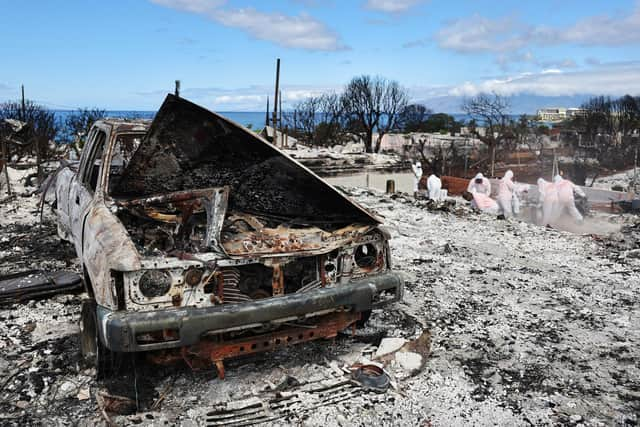Climate change disasters 2023: Global postcode lottery leaves poorer countries vulnerable to impact of disasters, report finds
An analysis of the top 20 costliest extreme climate disasters over 2023 has revealed a global postcode lottery “stacked against the poor” where the relative economic impact of disasters varies considerably across countries.
International development charity Christian Aid, which published the analysis in their report Counting the Cost 2023: A year of climate breakdown, warns “more climate finance is desperately needed”, including investment in early warning and early action.
Advertisement
Hide AdAdvertisement
Hide AdThe top 20 list of the costliest extreme disasters of 2023 across a range of 14 countries shows some countries – through size, geography, or other factors – are more prone to experience disasters.


The charity further found the highest per capita cost of natural disasters were the wildfires which affected Hawaii in August. The cost of these wildfires’ averages over $4,000 (£3,100) per person – far beyond the second costliest per capita, Guam’s storms in May, which cost almost $1,500 per head of population. More than 100 people died in the Hawaii fires, which were caused by dry, gusty conditions created by a strong high-pressure area north of Hawaii and Hurricane Dora to the south.
The cost ranges from over $4,000 per person due to wildfires in Hawaii to $9 per person due to flooding in Peru. The average cost across all 20 disasters was over $400 per person.
Pointing to the “global postcode lottery”, Christian Aid said disasters are worse for those countries which are unable to withstand them because of less resilient homes, places where many people are employed in agriculture vulnerable to extreme weather, and areas which lack government investment in prevention or rebuilding.
However, all six populated continents were represented in the list. Even large countries with big populations featured, including the US, China and Mexico. All of these three nations have populations of more than 100 million, yet experienced disasters which cost tens of dollars per head of population.
Cyclone Freddy, which features on the list, hit the population of Malawi in February. More than 1,400 people died in the second-deadliest tropical cyclone ever to occur in the South-West Indian Ocean.
Mofolo Chikaonda, a widow aged 69, from southern Malawi, said: “The worst negative impact of Cyclone Freddy that I shall never forget in my entire life is the destruction of the only house that we struggled to construct.”
Christian Aid Scotland’s campaigns and advocacy lead, Andrew Tomlinson, said: “The report is a stark reminder that the climate is changing and the impact is being felt around the world, from Hawaii to Malawi. As we know all too well in Scotland, extreme weather brings a huge cost to the communities left picking up the pieces, and it is only fair that industrialised nations, who have contributed the most to this crisis, step in and play their part.
Advertisement
Hide AdAdvertisement
Hide Ad“As we head into the new year, we call on governments and decision makers to make the climate crisis their top priority. We need to keep fossil fuels in the ground and we need to support those countries least able to endure the storms – countries like Malawi who have contributed the very least to the climate emergency.”
Comments
Want to join the conversation? Please or to comment on this article.
